|
by Bernard Martin & Luigi Chinetti Jr. Pittsburgh, PA - The Pittsburgh Vintage Grand Prix (PVGP) is thrilled to announce that Luigi Chinetti Jr. has been named the Grand Marshal for the highly anticipated 41st running of the event. This year's PVGP will be a special celebration, as Ferrari has been named the Marque of the Year, with a focus on the remarkable history of the North American Racing Team, NART. Luigi Chinetti Jr.'s family legacy and his own racing career make his the perfect choice for this prestigious role. His father Luigi Chinetti Sr,. played a pivotal role in developing the Ferrari marque in North America. Through his efforts and his sales abilities using an informal dealer system, he established a strong foundation for Ferrari's presence in North America. These sales significantly contributed to Ferraris financial stability, providing in part the resources necessary to support his racing activities. Luigi Chinetti Jr. followed in his father's footsteps, not only as a prominent figure in the Ferrari world but also as a talented racing driver on his own. His biography is a testament to his dedication and passion for racing and the Ferrari Marque. He began his informal racing career in the late 1960s, building upon the foundation laid by his father. In his first appearance at 24 hours of Daytona he finished a credible 7th overall, and in next year’s event, racing a 312P winning his class. Going on to Sebring for the 12 hour race, he was to finish in the top ten between 1970 and 1973. However, it was at the 24 Hours of Le Mans in 1971, at 29 years old, where he joined fellow competitors to make his first start at the Circuit de la Sarthe. He competed in the iconic endurance race three times with NART Ferrari's: in 1971 finishing 5th with Bob Grossman, behind two Porsche 917s and two Ferrari 512Ms winning his class. In 1972 with 1965 LeMans winner Masten Gregory; a retirement, and in 1973 with François Migault finishing13th. As he is fond of saying, “My most interesting success came on the Bonneville Salt Flats, where I was aired with Graham Hill, a World Champion, Milt Minter, and most notably, Pau Newman!” He came away with a World Record that still stands. Beyond his achievements as a driver, he also made significant contributions as a designer. In 1967, he worked with fashion illustrator Bob Peak in designing several unique Ferraris that have attained significant notoriety. These include two estate wagons, and a mid-engined Ferrari, based on a 250P which was later updated to 275P specifications after 1964. It was Michelotti-built and made the cover of Car and Driver magazine. Several others cars where penned by Chinetti,Jr. including the rather famous 1972 Ferrari Daytona 365 GTB/4 Shooting Brake "extended coupe”. Luigi Chinetti Jr. has been an ambassador for Ferrari and the NART legacy. He has worked tirelessly to preserve and promote the rich history of NART, ensuring that future generations understand and appreciate its significance in the world of motorsport. As the Grand Marshal of the 2023 Pittsburgh Vintage Grand Prix, Luigi Chinetti Jr. will grace the event with his presence, sharing his invaluable experiences and insights with fellow enthusiasts, fans, and participants. His involvement will undoubtedly elevate the event and make it a truly unforgettable experience. The Pittsburgh Vintage Grand Prix is honored to welcome Luigi Chinetti Jr. as the Grand Marshal, commemorating the legacy of NART and celebrating Ferrari as the Marque of the Year. This year's event promises to be a remarkable tribute to motorsport history, bringing together enthusiasts from all over the world. For more information about the Pittsburgh Vintage Grand Prix and the 2023 event, please visit www.pvpg.org or contact Bernard Martin. About the Pittsburgh Vintage Grand Prix The Pittsburgh Vintage Grand Prix is a world-class vintage racing event that takes place annually in Pittsburgh, PA. Founded in 1983, the PVGP has become one of the largest vintage racing events in the United States and the longest running Vintage Race on city Streets in North America. The event features a variety of races, car shows, and activities, attracting participants and spectators from around the globe. The PVGP is also a charitable organization, raising funds to support individuals with autism and intellectual and developmental disabilities.
0 Comments
by Bernard Martin & Luigi Chinetti The Pittsburgh Vintage Grand Prix is honored to host Ferrari as our 2023 Marque of the Year and to pay homage to N.A.R.T. - the North American Racing Team both of which are deeply entwined in Pennsylvania history. Innovation and Power Ferrari has been a timeless symbol of speed, power, and passion and one of the most iconic and successful brands in the world of motorsports. Enzo Ferrari began his career as a test driver for a small car company in Milan. He made his competitive debut in the 1919 before moving on to work with Alfa Romeo as a racing driver and later as a team manager. In the early 1920s, Ferrari began to develop promising racing drivers outside of Alfa Romeo who campaigned for Italian marques such as Fiat and Lancia. In 1929, he established the Scuderia Ferrari racing team as a way to support and develop race driver talent. The team became most successful in the sport, amassing numerous victories against stiff competition. Ferrari's background as a racing driver, team manager, his passion for cars were combined with a remarkable ambition to succeed. In 1937, Scuderia Ferrari was dissolved by Alfa Romeo and renamed Alfa Corse. It was just a matter of time before he would begin racing under his own name and producing road going automobiles to fuel these racing desires. On September 9, 1939, Enzo left Alfa Romeo under the provision that he would not use the Ferrari name in association with races or racing cars for at least four years. Subsequently he founded Auto Avio Costruzioni, headquartered in the facilities of the old Scuderia Ferrari in Modena. In 1940, Ferrari produced his first racing car, the Tipo 815, based on a Fiat platform making its debut at the 1940 Mille Miglia. during World War II, and the factory was destroyed by bombing, after which, the Scuderia Ferrari name was resurrected and he produced first Ferrari-badged car, the 125 S, in 1947. The Ferrari automobiles established themselves as a force to be reckoned with even at such a young age. In 1949, Luigi Chinetti, much against Ferrari’s wishes, in a car he prepared himself entered and won the 24 Hours of Le Mans, driving 23 hours himself. Ferrari went on to dominate the early years of the World Sportscar Championship which was created in 1953, winning the title seven out the first nine years besides winning a number of World Championships in Formula One. In fact, Ferrari is the only team to have competed in the Formula One World Championship continuously since its inception in 1950. Ferrari's success on the track was built on the back of its powerful and innovative cars, which were known for their speed, and reliability. The marque’s most fameous models include the 250 Testa Rossa, the 250 GT California Spyder, and the GTO, to name but a few. NART: THE NORTH AMERICAN RACING TEAMOne of the key figures in Ferrari's early success in America was Luigi Chinetti Sr. who was appointed as the official importer of Ferrari cars to the United States in the late 1940’s. Chinetti convinced Enzo Ferrari in 1946 that he could sell his cars in North American . Of note, the first Prancing Horse that Maranello shipped across the Atlantic as part of this new partnership was a 166 MM Barchetta, followed by a 166 Corsa Spider. The 166 Corsa was purchased by Briggs Cunningham he is credited as the first American to bring a Ferrari to the U.S. for racing, thanks to Chinetti. Chinetti's passion for the brand, and his belief in the potential of American drivers and teams, led him to establish the North American Racing Team (NART) in 1958. Italian-born Luigi Chinetti claimed victory in the first post-war 24 Hours in 1949, three years after becoming an American citizen in a 166mm. His naturalization was sponsored by none other than Zora Arkus-Duntov. In 1958, Phil Hill, became the first driver born in the USA to stand on to the top step of the Le Mans podium after winning in his Ferrari 250. NART was the was one of the first American teams to ever compete in the 24 Hours of Le Mans. NART was also involved in other international motorsports events such as the 12 Hours of Sebring and the 24 Hours of Daytona. The partnership between NART and Ferrari was key in promoting Ferrari in the American market, through the team's numerous racing successes and its lasting impact on the sport. A significant event happened in 1964. A Ferrari 158 car, officially entered by NART, sealed the win of the 1964 F1 World championship with John Surtees. As the works team competed the in the last two races of the season, the United States Grand Prix and Mexican Grand Prix, the livery of the cars where painted white and blue - the national colors of the team. This was done as a protest because of arguments between Ferrari and the FIA regarding the homologation of a new mid-engined Ferrari race car. It seems the people at the FIA where upset when they found out Ferrari had previously deceived them in just how many cars he had road going cars they produced. (Read more: Do you remember...when Ferrari raced in blue) Where a racing class requires that the vehicles raced be production vehicles only slightly adapted for racing, manufacturers typically produce a limited run of such vehicles for public sale so that they can legitimately race them in the class. This is what is called homologation. When officials from the FIA visited Maranello to count the number of cars, legend has it that not quite enough had been built – an issue creatively disguised by a lunch break and a group of cars being moved elsewhere within Maranello to be double-counted. Whether it is true or not, the grumbles to the FIA from competing teams persisted. NART's most famous achievement was winning the overall victory at the 24 Hours of Le Mans in 1965 with a Ferrari 250LM driven by Jochen Rindt and Masten Gregory. In that race, Pittsburgher Ed Hugus, although not officially credited as a winner, the legend continues that he was a co-driver of the winning car albeit for just a few laps. Ferrari did not win overall at LeMans again until this past June after a 58 year lapse. NART also raced Ferraris in the US with great success, winning the 12 Hours of Sebring in 1968 and 1970. NART's team was made up of notable drivers such as Dan Gurney, Pedro Rodríguez, Mario Andretti, and Phil Hill. The North American Racing Team's entries in the final three rounds of the 1969 season were the last occasions on which a team other than Scuderia Ferrari entered a World Championship Grand Prix with a Ferrari car. In 1962 Al Garthwaite Jr. became the owner of Derham Custom Body Company of Philadelphia in 1962 and renamed the company Algar, short for AL GARwaite which would become Algar Ferrari. Today, Algar Ferrari is named Ferrari of Philadelphia but more about that below. In 1972, Garthwaite and Chinetti partnered to create an automobile importing company fundamental to the birth to the East Coast American Ferrari Dealer Network. Establishing retailers from the Atlantic coast to the Mississippi River and through the lower half of Texas, the Chinetti-Garthwaite enterprise imported over 1600 Ferraris to this network through a distribution facility in Paoli, Pennsylvania. The Chinetti-Garthwaite partnership also became a custom builder of Ferrari’s. Luigi Chinetti, Jr. had a passion for shooting brake models and a talent for automotive design. In 1967, Chinetti, Jr. was started to design custom Ferrari’s. One of these became the famous 1972 Ferrari 365 GTB/4 Shooting Brake. But that is a story for another time. The success of the Paoli-based distribution partnership contributed measurably to the restoration of Ferrari racing greatness. North American sales funded Ferrari Racing. If you’ve seen the movie “Rush” you know that Formula 1 is a contest where dollars produce horsepower. Chinetti’s idea to sell Ferrari’s in North America paid off with a Formula 1 title merely three years after the Chinetti-Garthwaite partnership was established. The Scuderia Ferrari team won the coveted Formula 1 World Championship three more times in the next four years. Many attribute those successes to the funding provided by North American sales. In addition to its racing achievements, NART was also known for its unique and striking livery, which featured a blue and white color scheme. This livery, designed by Chinetti's wife, became one of the most recognizable in the history of motorsports. The Chinetti-Garthwaite partnership disbanded in 1980 when Ferrari established a factory controlled entity for US distribution but the team's legacy lives on through its numerous racing successes and its lasting impact on the sport. NART raced Ferraris until 1982, at which point it had participated in more than 200 races with over 100 different drivers. On December 24, 2021 Algar Ferrari was sold and renamed Ferrari of Philadelphia who joins us on the showfield July 22nd and 23rd. Together, Ferrari and NART wrote one of the most fascinating chapters in motorsports history. Ferrari and NART association with some of the greatest drivers and cars in the history of motorsports is why is has been chosen, for only the second time since 1992, as the Marque of the Year for the PVGP. If you would like to attend the Ferrari Marque of the Year dinner on Friday July 21, 2023 and meet Luigi Chinett, Jr., click the button below.
by Bernard Martin and Chat GBT PITTSBURGH, PA (March 14, 2023) The Pittsburgh Vintage Grand Prix is proud to announce that Ferrari and N.A.R.T. – North American Racing Team, will be honored as Marque of the Year at the 2023 event. The two entities have a rich and fascinating history inextricably intertwined with Pennsylvania, and their association has led to some of the most memorable moments in the world of motorsports. Ferrari, one of the most iconic and successful brands in motorsports, has been a timeless symbol of speed, power, and passion. Enzo Ferrari, the founder of the company, began his career as a test driver for a small car company in Milan and later worked for Alfa Romeo as a racing driver and team manager. In 1929, he established the Scuderia Ferrari racing team to support and develop race driver talent, which quickly became one of the most successful teams in the sport. After dissolving Scuderia Ferrari in 1937, Enzo Ferrari founded Auto Avio Costruzioni, which produced the first Ferrari-badged car in 1947. Ferrari quickly established itself as a dominant force in racing, winning numerous races and championships in Formula One and other international motorsports events. 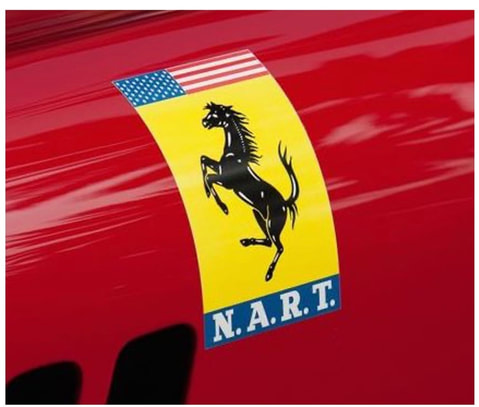 Photo courtesy Victor Varela / Sports Car Digest Photo courtesy Victor Varela / Sports Car Digest Luigi Chinetti Sr. played a significant role in Ferrari’s early success in America. He was appointed as the official importer of Ferrari cars to the United States in the late 1940s, and his passion for the brand and belief in the potential of American drivers and teams led him to establish the North American Racing Team (NART) in 1958. NART was the only American team to ever compete in the 24 Hours of Le Mans, and it was involved in other international motorsports events such as the 12 Hours of Sebring and the 24 Hours of Daytona. NART’s partnership with Ferrari was essential in promoting Ferrari in the American market, and it had a lasting impact on the sport. NART’s most famous achievement was winning the overall victory at Le Mans in 1965 with a Ferrari 250LM driven by Jochen Rindt, Masten Gregory, and Ed Hugus. Coincidentally, Ed Hugus was born in Pittsburgh and raced at LeMans 10 times and later opened a Pittsburgh auto dealer that built the first three Shelby Cobras. He also helped establish the Steel Cities Region of the SCCA. The team also won the 12 Hours of Sebring in 1968 and 1970, and its drivers included notable names such as Pedro Rodríguez, Mario Andretti, and Phil Hill. The 2023 Pittsburgh Vintage Grand Prix will showcase the rich history and legacy of Ferrari and N.A.R.T. Many chapter members of the Ferrari Club of America from throughout North America have already committed to congregating in Pittsburgh for Tifosi-centered events. The events are expected to attract a vast number of motorsport enthusiasts and will feature a wide range of activities, including car shows, races, and exhibitions. Click this link to see all of the 2023 Events for Ferrari July 14-23 Race WeekThe PVGP features two weekends of racing. The first weekend is the Historics at Pittsburgh International Race Complex. The second weekend features vintage racing on a 2.33-mile road course through the streets of Schenley Park in front of 100,000 fans and 3,000 show cars on the Bob O’Connor Golf Course. Between the race weekends there are numerous car shows, parties, rallies, and parades. See the entire 10-Day Calendar of Events. CONTACTS:Dan DelBianco (412) 559-3500 delbianco@pvgp.org Bernie Martin (412) 996-5700 bernardtmartin@pvgp.org About the PVGPBegun in 1983, the Pittsburgh Vintage Grand Prix Motorsport Festival features two weekends of racing action. The first weekend is the PVGP Historics at Pitt Race. The second weekend is racing on a 2.33-mile road course set on the streets of Schenley Park. Between the race weekends there are car shows, parties, car shows road rallies, and more. The PVGP is a volunteer driven event with 1,200 volunteers. The PVGP is a volunteer driven 501 (c) (3) non-profit organization with a mission to provide residential care, treatment and support for people with autism and intellectual/developmental disabilities. Since 1983, $6.4 million has been donated locally to Autism-Pittsburgh and Merakey Allegheny Valley School.
The Pittsburgh Vintage Grand Prix (#PVGP) is is very excited that Ferrari and N.A.R.T. - North American Racing Team, will be honored as Marque of the Year at the 2023 motorsports festival. The two entities have a rich and fascinating history inextricably intertwined to Pennsylvania, and their association has led to some of the most memorable moments in the world of motorsports. Several Ferrari Clubs already have events planned to attend the PVGP Motorsports Festival Events:
Ferrari CLubs' "definitely attending" eventsFerrari Clubs are participating in the following events: Wednesday, July 19, 5-9 PM - Tune-Up @ SouthSide Works: The SouthSide Works is Pittsburgh’s premier city lifestyle center. Uniquely positioned on the Monongahela riverfront and nestled in Pittsburgh’s historic and bustling Southside neighborhood on the site of the former J&L Steel Works. Hundreds of cars will gather for a fabulous car show including race cars, exotics, antiques and show cars for this exciting street festival in the streets surrounding SHOP 412 and the SouthSide Works Town Square. Cost is $50 per car and includes two drinks. Thursday, July 20, 6:30-11 PM – Passport to Elegance Hanger Party: An exclusive Hangar Party at the Pittsburgh-Butler Regional Airport. The party will be Ferrari themed as we anticipate a large contingent of Ferrari owners coming into town to celebrate the Marque of 2023. Get immersed in the evolution and examples of the rare and interesting automotive and air transportation throughout this period in a festive and lavish atmosphere featuring scrumptious passed hors devours, top notch strolling food stations and two top-shelf open bars. The evening will also include live music, silent and live auctions and other surprises you won’t want to miss. Cost $395 per person includes premium appetizers and open bar. Friday, July 21, 6-9 PM– Ferrari Marque of the Year Dinner Reception at the Pittsburgh Golf Club. Please join Ferrari Club members, honored guests and Grand Prix dignitaries for a relaxing evening at the Historic Pittsburgh Golf Club. A strolling dinner and cash bar accompanied by some live entertainment while you enjoy the evening inside the clubhouse and a preview of the attractions at the Cortile. Car show participants for the evening will also get their dash card required for entrance for the weekend and receive expedited entry both Saturday and Sunday. $65 per person Saturday & Sunday, July 22-23, 9AM-5PM - Cortile / Ferrari Marque of the Year Weekend - The “Cortile della Corsa” is the Italian Car Show at the Pittsburgh Vintage Grand Prix. It translates into the "Courtyard of Racing" , which is an appropriate name for our display of fine Italian macchina on the 18th hole of the Bob O’Connor Golf Course at Schenley Park. As the 2023 Marque of the Year, Ferrari's have a special show area. Enjoy the entire weekend at the Pittsburgh Vintage Grand Prix overlooking the car shows on the Schenley Park Golf Course and the vintage races through the city streets. $150 Entry includes:
You can get more details about the individual events by clicking the links in the event name above. If you would like to register for the events above please use the button link below. To save time, be sure to set up your profile and book all of your registrations in one sitting. Just add items to you cart and continue shopping. Doubletree Hilton Cranberry Twp Host HotelThe DoubleTree by Hilton Hotel Pittsburgh - Cranberry Twp, PA is the host hotel for Ferrari Clubs. Located at the intersection of 1-79 and the Pennsylvania Turnpike, close to Route 19, we’re an accessible choice for neighboring states or conferences.
The Passport to Elegance Hanger Party is about 25 minutes North while Pittsburgh Vintage Grand Prix in Schenley Park is about 25 minutes South. You will enjoy returning to the welcoming indoor bar and restaurant after your day at #PVGP events NART (North American Racing Team) was a racing team that fielded Ferrari sports cars in various racing events, including the 24 Hours of Le Mans. The team was founded by Luigi Chinetti, a former Ferrari racing driver who had established a Ferrari dealership in New York City in the 1950s. NART's racing history at Le Mans began in 1958, when Chinetti and co-driver Olivier Gendebien won the race in a Ferrari 250 Testa Rossa. This was the first of four Le Mans victories for the team, which would go on to compete in the race over the next decade. In 1961, NART entered three Ferraris in the race, including a 250 GT SWB, a 250 GT California, and a 250 TRI/61. The 250 GT SWB driven by Gendebien and Phil Hill finished second overall, while the California driven by Bob Grossman and Glenn Roberts finished fifth overall. The team also won the GT class with the 250 GT California. In 1963, NART entered a Ferrari 250 GTO in the race, which was driven by Pedro Rodriguez and Jean Guichet. The car retired from the race due to engine problems, but it remains one of the most iconic NART Ferraris to have competed at Le Mans. NART's 1965 Le Mans victory with a 1964 Ferrari 250 LM was a significant moment in the team's racing history. The car, driven by Jochen Rindt, Masten Gregory and Ed Hugas (from Pittsburgh PA), completed 347 laps and secured the first and only overall victory for a Ferrari 250 LM at Le Mans. This was also the first overall win for an American team at Le Mans and the seventh overall win for Ferrari at the race. The victory remains one of the most iconic moments in NART's racing history and a testament to the team's success in the world of endurance racing. NART's final Le Mans victory came in 1972, when the team entered a Ferrari 365 GTB/4 Daytona in the GT class. The car was driven by Luigi Chinetti Jr., Bob Grossman, and Francois Migault, and it finished 9th overall and first in class. Overall, NART's racing history at Le Mans is a testament to the team's success in the world of sports car racing, and to the enduring legacy of the Ferrari brand at one of the most challenging and prestigious racing events in the world. Ferrari Quits LeMansFerrari's decision to quit Le Mans in the late 1970s was largely driven by changes in the rules and regulations of the race that made it less attractive to the company. In particular, new rules were introduced that favored the use of smaller engines with reduced fuel consumption, rather than the larger, high-performance engines that Ferrari was known for.
At the time, Ferrari was also facing financial difficulties and was struggling to compete with other manufacturers in Formula One and sports car racing. The company had also recently faced the loss of its founder, Enzo Ferrari, who passed away in 1988. These factors, combined with the changing regulations in Le Mans, led Ferrari to shift its focus to other racing series, such as Formula One and GT racing. Despite this, Ferrari has continued to be a dominant force in sports car racing and has won multiple championships in GT and endurance racing over the years. We are just over 30 days away from this summers Cortile Italian Car Show at the Pittsburgh Vintage Grand Prix! We've got some great new things for you to enjoy this year! Saturday & Sunday July 20-21, 2019 2019 Proiettore Macchina: Alfa Romeo 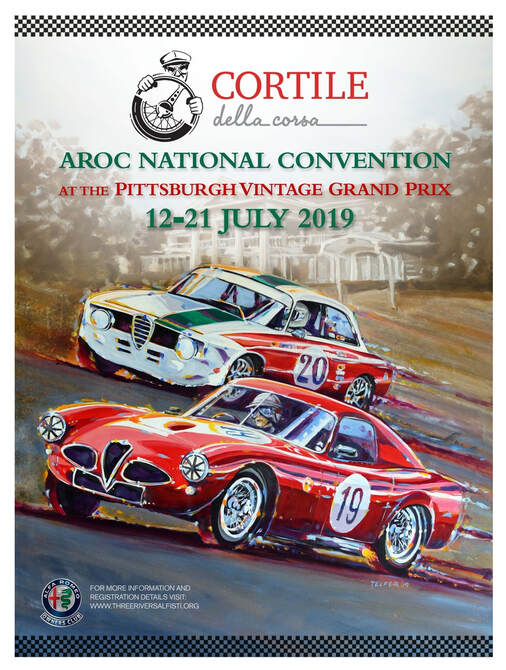 The 2019 Spotlight car of the Pittsburgh Vintage Grand Prix is Alfa Romeo. Poster art by artist Kelly Telfer. The 2019 Spotlight car of the Pittsburgh Vintage Grand Prix is Alfa Romeo. Poster art by artist Kelly Telfer. As you know, each year the Cortile selects a marque to highlight for our annual event. The Macchina of Alfa Romeo have been selected as our 2019 Proiettore Macchina! Joining us this summer is the Alfa Romeo Owners Club (AROC) who will be holding their North American Convention and honored also as the spotlight car of the 2019 running of the Pittsburgh Vintage Grand Prix.. The theme for the AROC convention is "Cortile della Corsa", the "Courtyard of Racing" and will feature Alfa Romeo's on the track as well as iconic racecars on the showfield. Be sure to check out the poster car that was raced by Fangio and Phil Hill. Wine on 9 & Lunch on 9! 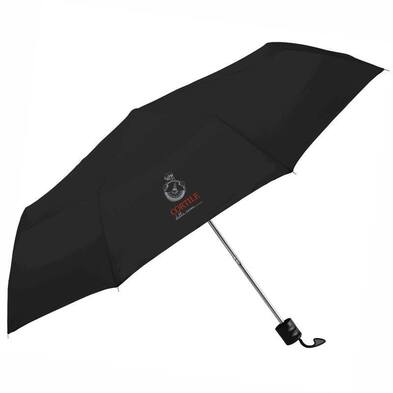 Deb Schurko came up with the idea of Wine Tasting on Turn 9 a few years ago and it's become the best place to watch the races on Sunday. Plenty of shade and some wine tasting, courtesy of Mazza Winery, after the opening ceremonies and parade! This year we're introducing something new, but first... This year, we've had a slight price increase on weekend registration to $150. After 10 years we've experienced a few cost increases and it was time to adjust up a bit to make sure we where keeping our contribution to the charity growing compared to the other marques down the hill from us. JKS Sponsors Lunch on Sunday! But, in conjunction with Wine on 9 at the Westinghouse Pond on Sunday,we've also got a NEW sponsor in JKS Financial . As a company with more than 45 years of combined experience, JKS Financial prides themselves with the relationships they build with their clients and they want to build some charitable relationships with us! This summer they are sponsoring and hosting the Sunday Catered Lunch at the Westinghouse Fountain. 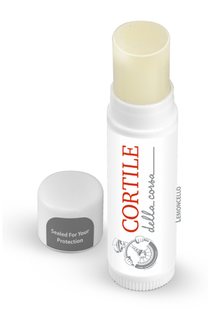 This year your weekend entry will get you lunch for two on both Saturday and Sunday! We've also upgraded some of our goody bag stuff. This year we're including a collapsible umbrella (to keep you in the shade of course) and some beeswax lip balm so your lips aren't burned for the wine tasting! And you will love this year's t-shirt! It features the poster art you see up above. Artist Kelly Telfer will be on hand to autograph the posters and even your shirt or hat. Oh! I forgot to mention the hat! This year's is different from previous years. You'll just have to wait and see that! Meet the Cortile Judges! If you have not gone over to the judges tent at the previous years events and chatted with the judges you may just want to do that.
Did you know that Steve Barney was the first person outside of a direct Ferrari employee to ever get to own a Ferrari Grand Prix Car? Ask Steve about Nikki Lauda's F1 Car that he owned thanks to his friend Enzo Ferrari. Steve is also the founder of Foreign Cars Italia in the south and is pretty intimate with all Italian marques. You may also want ask some questions of Tom Frasca. Tom was Dipendenti Ferrari for the North American Racing Team, more commonly known at NART. Tom served as Luigi Chinetti's right hand man for 26 years until 1994 and was a witness to much of the history that has made Ferrari an iconic name today. Stop by the judges tent at 2pm to ask them some questions! Now, to do all that you've got to register! If you have not done so already, click the button below and register now for the Cortile Weekend. (If you own an Alfa Romeo CLICK HERE instead). Thank you very much for your continued support of our charities! Bernie
Where it startedIn 1896 the first Italian car was produced. 10 short years later, in 1906, the Targa Florio race was started. The Targa Florio race drove much of the passion of the early Italian Automobile manufacturers who’s names have become the legends of today. The Targa Florio open road endurance race was considered one of the toughest competitions in Europe. The 1906 first running covered 3 laps equalling 277 miles through multiple hairpin curves on treacherous mountain roads, and at heights where severe changes in climate frequently occurred. Then, just as today, automobile manufacturer’s and drivers proved their mettle by winning races. It was out of that heat of racing competition that fueled many of the iconic Italian car marques of today. Alessandro Cagno won the very first Targa Florio in 1906. He was employee #3 at the Fiat automobile company that had formed in 1899. Fiat was one of the first Italian manufacturers to be involved in racing. In 1908, Vincenzo Lancia, finished 2nd at Targa Florio. Lancia had been a race driver for Fiat starting in 1900. In 1906 he had started is own automobile manufacturer and launched his first production car, the Lancia Alpha, in 1908. By 1913, Lancia introduced the the very first complete electrical system as standard equipment on his cars. No doubt that innovation was derived from his racing experience. Although Vincenzo Lancia started his company in 1906, at the 1908 Targa Florio he was driving a Fiat. Not only where the boundaries of the race courses muddy at that time, so where the relationships between those early manufacturers. They shared component parts and people. It's always been a melting pot in that sense... Some have said that the history of Italian car manufacturing reads like a soap opera, with tales of arguments and agreements, of splits, mergers and acquisitions. Indeed, the tales of who worked for whom, who raced for whom and who supplied what for whom are so very intertwined and melded together that it is often difficult to know where any single bit of innovation originated. Enzo Ferrari once said "If you see what a competitor is doing and it is better than what you are doing, you have to surpass them to ensure your cars are better." Italian manufacturer’s where constantly stealing away the best talent or forging new alliances, whether it be engineering, design, production or racing drivers. It’s that hot blooded molten cauldron of racing competition that forged Italian cars from the very beginning.
The Monocoque & Carrozzeria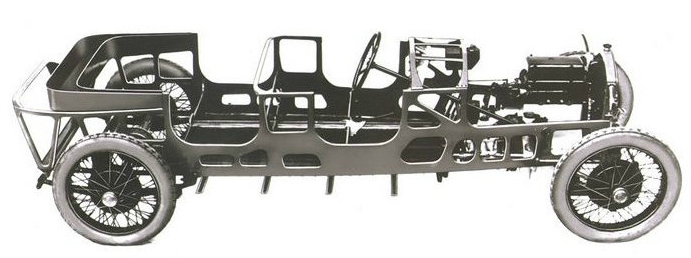 The Lancia Lamda was based around a steel monocoque which eliminated the need for a heavy frame. Most of the body's strength came from the driveshaft tunnel which formed a lightweight backbone for the car. Passengers were seated beside the tunnel allowing for a lower roofline. Typically cars of this period placed all the occupants above the driveshaft which resulted in a high center of balance. In 1922 Lancia introduced the very first monocoque bodied car. That is, the first car that had a body that supported the structural load by using the car's exterior body, rather than an internal frame. The idea of a monocoque was not well received in 1922 even though it is the standard design in Formula One and Indy Car Series racing today. This was primarily because of the use of Carrozzeria. In those early motoring days, you see, when series production did not yet exist, the process of acquiring a new vehicle required two major decisions by a car buyer:
Editor's note: Are you seeing red yet? Quite the soap opera so far eh? We're only in the 1920's! This is part of the reason why the Cortile at the PVGP is a car show about ALL of the Marques of Italy: They are all so very intertwined that it's difficult to appreciate one marque without paying homage to several others at the same time. Keep reading, it gets more interesting... Rosso Red, The Quadrofoglio & Scuderia FerrariWhy Italian Cars are Red In 1904, many national motor clubs banded together to form the Association Internationale des Automobile Clubs Reconnus (AIACR) which is the predecessor to the current FIA governing board which it become known as in 1950. Originally the country colors where: Blue to France, Yellow to Belgium, White to Germany and Red to the USA. Italy “adopted” its famous 'Racing Red' when a red Itala (Itala was a car manufacturer based in Turin, Italy from 1904-1934) won the Peking to Paris race in 1907 but it really wasn’t ‘established’ until the “Rosso Corsa" Alfa Romeo’s began to dominate racing events in the 1920’s. The Quadrifoglio The cloverleaf or “quadrifoglio” has been used on Alfa Romeo cars since 1923. As a friend of Enzo Ferrari, Ugo Sivocci was hired by Alfa Romeo in 1920 to drive in the three-man works team, called "Alfa Corse", with Antonio Ascari and Enzo Ferrari.
Upon Sivocci's death, the quadrifoglio was adopted for all Alfa Romeo racecars. The quadrifoglio emblem 'cloverleaf' has been the symbol of Alfa Romeo racing cars since1923. Since WWII, it has also been used to designate the higher trim models of the range. The quadrifoglio is usually placed on the side panels of the car, above or behind the front wheels—on the front wings in the case of modern vehicle. Editors note: Sivocci’s car number was 17. That number was retired upon his death in 1923 and has not been used by ANY Italian Race team since. Ferrari begins at Alfa Romeo Which brings us back to Alfa Romeo who won the inaugural Grand Prix world championship in 1925 with Enzo Ferrari at the helm of the team.
Scuderia Ferrari In 1929 Ferrari started the Scuderia Ferrari team in order to enter amateur drivers in various races primarily racing Alfa Romeo’s. In 1930 Tazio Nuvolari won the Mille Miglia in an Alfa Romeo 6C. In 1933 Alfa Romeo experienced financial difficulties, and withdrew its in-house team from racing. The Alfa Romeo racing team was privatized and officially named Scuderia Ferrari with team leader Enzo Ferrari at the helm. Few people realize that the DNA for every Ferrari was actually born on Alfa Romeo's payroll. Enzo built a robust racing team from scratch starting in 1929, tapping some of the greatest pre-war drivers in Europe to lead the Scuderia to victory. Editors Note: Ferdinand Porsche once said that Tazio Nuvolari is
In 1937, the Maserati brothers sold their shares of Maserati to Adolfo Orsi, although they continued working for the company as engineers under a 10 year contract. In 1938, Alfa Romeo management made the decision to enter racing under its own name, ere-establishing the Alfa Corse organization, which absorbed what had been Scuderia Ferrari. Enzo Ferrari disagreed with this change in policy and was dismissed by Alfa Romeo in 1939. The terms of his leaving forbade him from motorsport under his own name, for a period of four years. However, Ferrari managed to manufacture two cars, named the AAC Tipo 815’s, for the 1940 Mille Miglia, engineered by Alberto Massimino and driven by Enzo’s old racing partner Antonio Ascari’s son, Alberto Ascari. This name comes up again later… in 1939 and 1940, a Maserati 8CTF won back-to-back wins at the Indianapolis 500, the only Italian manufacturer ever to do so. World War II, however, brought a halt to most racing. postwar: "Italian" & "Racing" become synonymousAfter WWII new key people joined the Maserati team. Alberto Massimino, the Fiat engineer, with both Alfa Romeo and Ferrari experiences oversaw the design of all racing models for the next ten years. The focus was on the best engines and chassis to succeed in car racing. The new projects saw the last contributions of the Maserati brothers, who after their 10-year contract with Orsi expired went on to form O.S.C.A. in 1947. Also in 1947, Ferrari decided to start making cars bearing his name, and founded Ferrari S.p.A.
By 1949 Ilario Bandini was producing his own car and entered Mille Miglia with his new 1100 siluro, featuring torpedo-like bodywork car and used the a Fiat engine, modified with a twin overhead camshaft cylinder head based on an Alfa Romeo design. Carlo Abarth had been sporting director of the Cisitalia factory racing team since 1947. In 1948 begun the financial downfall of Cisitalia, spurred by the investments needed to put the 202 coupé into production; the following year the manufacturer went under. Carlo Abarth took over Cisitalia's assets and in March of 1949 and Abarth & C. was founded. As you can see once again, just a before the war, Italian auto manufacturing was a melting pot and one of the reasons people are often confused about Italian marques. Interestingly, the Cisitalia 202 is featured in the 2011 video game “L.A. Noire” by Rockstar Games and Team Bondi as a secret car called the Cisitalia Coupe. The game resulted in the liquidation of Team Bondi. Iso Autoveicoli S.p.A. was founded in 1953 by Renzo Rivolta with the introduction of the Isetta “bubble car” The Isetta is always a hit when kids see them at the PVGP and “It’s so cute!” is often heard at both the Cortile and the BMW show. The Isetta was designed to be an ‘everyman car more or less in the same spirit of Henry Ford’s Model T, to enable the Europeans get back on their feet after the war and move into the use of cars again and away from motorbikes which had been the defacto form of transport in the immediate post war era. Demand for the Isetta was so great that eventually BMW stepped in and took over production. “Second is the first of the losers.”The mixing and matching of components, teams and drivers in the 1950’s was both confusing, exciting and exactly where the legend of Italian performance took it’s grip on the asphalt and has not let go since. In 1950 Nino Farina won the first Driver’s Championship in an Alfa Romeo. In 1951 Alfa Romeo won again with pilot Juan Manuel Fangio. By 1952, facing increased competition from their former employee, Ferrari, Alfa Romeo, by then a state-owned company, decided to withdraw after a refusal of the Italian government to fund the expensive design of a new car. In 1952 Alberto Ascari gave Ferrari its first Drivers Championship and then again in 1953. Ascari drove for Ferrari, Lancia and Maserati for the 1954 campaign. Ascari won the Mille Miglia driving a Lancia sportscar.
Enzo Ferrari is famously quoted: “Second is the first of the losers.” Being first in racing was everything for him and he dominated the 1950’s in World Sportscar Championship winning in 1953, 1954, 1956, 1957, 1958, 1960 and 1961 but Maserati was always close at hand, especially in 1956 with a Maserati 300S driven by Stirling Moss. Notably, 1957 marked the year that Argentine-born Alejandro de Tomaso made his Formula One debut as a driver. That becomes rather important later in our story as de Tomaso became the owner of Maserati and many other iconic marques in the 1970's. But, again, we're getting ahead of ourselves in the story.... After 1957, Maserati began focusing on building road cars due to financial difficulties. Some have said it was the Italian passion for the racing business that drove up the performance innovation of not only Italian cars but all automotive manufacturers in this period. Alas, it may also have been the focus on the racing business that took the focus off of selling consumer cars, and, by the 1960’s, many Italian Marques where experiencing lots of "financial difficulty." Racing, they say, can make you a millionaire… if you start out as a billionaire. Consolidation & ExpansionIn 1959 Alejandro de Tomaso founded De Tomaso Modena SpA . 1961 marked the year that Alfa Romeo started importing cars to the United States. Meanwhile at ISO, after the success of the Isetta bubble car, and together with engineer Giotto Bizzarrini, and chassis builder Bertone, Renzo Rivolta began developing the Iso Rivolta in 1962 and moved ISO into the “GT/Gran Turismo” (Grand Touring) & performance sports car manufacturer category. Editors Note; In October of 1963 the Ferrari Club of America was started, partially from the influence of Jack Katzen of Philadelphia and included as a club founder, Dick Merritt, who later raced in the inaugural Pittsburgh Vintage Grand Prix in 1983 with his 1959 Ferrari 246 Dino. 1964 marked the founding of by Bizzarrini S.p.A. by former Alfa Romeo, Ferrari and ISO engineer, Giotto Bizzarrini. The company built a small number of highly developed and advanced sport and racing automobiles. [Be sure to click on the Bizzarrini link for more of the story] Fiat Powered Although race cars did not bear the name Fiat on the their grill in the postwar period, Fiat became the power plant of choice for many companies. An alliance with Fiat was crucial to the success for many of the iconic racing names. Since it’s founding, Fiat had expanded manufacturing into farm equipment, marine engines and even airplanes while at the same time supporting many many of the Italian marques who's focus was on racing and performance....
During the 1960s and 1970s, Former F1 driver, de Tomaso acquired Ghia and Vignale coachbuilding studios, and gained control of the Benelli and Moto Guzzi motorcycle firms, the Innocenti car company, and, in 1975, the celebrated sports car maker Maserati, which de Tomaso rescued from bankruptcy. de Tomaso originally produced various prototypes and racing cars, including a Formula One car for Frank Williams' team in 1970 as well as the famous Pantera and Longchamp. The legend of LamborghiniAutomobili Lamborghini was founded in 1963 by manufacturing magnate Ferruccio Lamborghini. A former mechanic during World War II, Lamborghini started a tractor business, Lamborghini Trattori, in 1948, using leftover military hardware. By 1955, his tractor company was one of Italy's largest farming equipment manufacturers. Finding himself in a position to indulge his passion for luxury cars, Lamborghini began buying Alfa Romeos, Lancias, Maseratis, and Ferrari’s. Lamborghini thought Ferrari's cars were good, but too noisy and rough to be proper road cars. Most annoyingly, Lamborghini found that Ferrari's cars were equipped with inferior clutches, and he was continuously forced to return to Maranello for clutch rebuilds. Ferrari technicians would take the car away for several hours to make the repairs, not allowing the curious Lamborghini to view the work. Frustrated with the recurring nature of the problems, during one particularly long wait, he took the matter up with the company's founder, "Il Commendatore", Enzo Ferrari. What happened next has become the stuff of legend: Ferruccio complained to Enzo in "a bit of an argument", telling him that his cars were rubbish; the notoriously pride-filled Modenan was furious, telling the manufacturing tycoon, "Lamborghini, you may be able to drive a tractor, but you will never be able to handle a Ferrari properly. You stick to building tractors and I will stick to building sports cars.” Enzo Ferrari's snubbing of Lamborghini had profound consequences. Lamborghini later said that it was at that point that he got the idea that if Enzo Ferrari, or anyone else, could not build him a perfect car, he might be able to simply make such a car himself. An the birth of the Lamborghini Bulls began. Rally LegendsIn 1971 the Fiat 124 Sport Spider was prepared for Rally Competition when Abarth became involved with its production and development. From 1972 on they had relative success with wins in 1972, 1973 and 1974. The Fiat 131 Abarth was a very successful rally car replacing the 124. Between 1976 and 1981 Fiat Abarth won 18 World Rally Championship events, and won the WRC three times: in 1977, 1978, and in 1980. Notably in 1973, De Tomaso also purchased Italian motorcycle company Moto Guzzi.
The Lancia Delta is the most successful individual model designation ever to compete in rallying. All this gave Lancia a total of 11 Championships over the years. Lancia took over the role of motorsport for the Fiat Group during the 1980s. In 1988 Lancia was the Marque of the Year at the Pittsburgh Vintage Grand Prix. “I have no interest in life outside racing cars.”In 1972, Al Garthwaite, of Algar Ferrari of Philadelphia fame, and Luigi Chinetti partnered to create an automobile importing company in the United States which was fundamental in giving birth to the East Coast American Ferrari Dealer Network. Establishing retailers from the Atlantic coast to the Mississippi River and through the lower half of Texas, the Chinetti-Garthwaite enterprise imported over 1600 Ferraris to this network through a distribution facility in Paoli, Pennsylvania. Enzo Ferrari was once quoted as saying “I have yet to meet anyone quite so stubborn as myself and animated by this overpowering passion that leaves me no time for thought or anything else. I have, in fact, no interest in life outside racing cars.” However, to fund the racing cars, Enzo needed to sell cars and the Chinetti-Garthwaite enterprise SOLD cars. In fact, many have said that the sales of the cars in North America funded the technical developments in Ferrari F1 cars in the 1970’s and led to the success Ferrari in F1 with Niki Lauda piloting in in 1975 and 1977 and Jody Scheckter in 1979. We are very honored at the Pittsburgh Vintage Grand Prix Cortile to welcome Algar Ferrari as one of our sponsors of the Marques of Italy in 2015 and Tom Frasca, who was Luigi Chinetti's personal secretary for over 30 years as one of our Cortile Cup Judges. Marques of Italy
With the loss of new Italian cars being exported to the United Stated, interest waned for several years in the United States with the exception of the Italian car aficionados. 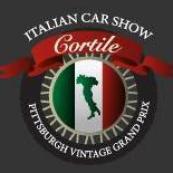 By 2007 a group of Italian Car enthusiasts prompted the Pittsburgh Vintage Grand Prix to showcase as Marque of the Year “All Italian Cars” . This included Marque of the Year Chairman, Bernard Martin, and Pam Martin, Chad Pcsoyler Ian Martin. The celebration in 2008 was so well received that the following year saw the founding of the Cortile Italian Car Show at the PVGP. Word must have gotten out about the resurgence of Interest in Italian cars because in June of 2009, Fiat Group and Chrysler Group LLC formed a strategic alliance. Consequently, Fiat has become the sixth largest car manufacturer in the world and it foretold the return of Italian marques Fiat and Alfa Romeo again being exported to North America. The Proiettore Macchina concept was introduced a the second year of the Cortile in 2010. Proiettore, in Italian, is the word for headlight. "Headlight" encapsulates our goal for Proiettore Macchina which is to shed light on the robust history of Italian motorsports and motorcars.
The Pittsburgh Vintage Grand Prix, presented by the Greater Pittsburgh Automobile Dealers Foundation, has a mission is to produce a world-class vintage racing event in order to raise funds that help provide residential care, treatment and support individuals with autism and intellectual and developmental disabilities in the Pittsburgh region through the Autism Society of Pittsburgh and Allegheny Valley School. Both of these charities play a key role in our success, supplying volunteers at all of our events.
Wayne Long, Chief Judge and Founder of the Cortile Cup has announced that he has selected a new Judge for the 2015 Cortile Cup Competition. Tom Frasca will be joining the judging team for the 2015 annual event at the Pittsburgh Golf Club on Saturday during the Pittsburgh Vintage Grand Prix.
 Prior to his acceptance of taking on the role of "Guidice Anziano" (Senior Judge) at this years Cortile Cup Competition, Tom developed a very robust resume. From 1969 through 1974 was a member of the SCCA and competed in Open Wheel & Sports Racing. He worked with Ferrari in North America on their racing team until 1994 and then served on the Architectural Review Board for Southeast New York. Design and engineering course through Tom's veins. In August of 2012 Tom created "Scuderia Ferrari Club of Denver" with the help of Gabriele Lalli, Piero Savazzi and Dr. Mauro Apicella of Ferrari GeS. This club had been in the workings since 2004 and is the only official sanctioned Ferrari F1 team club in North America. We are very honored to welcome Tom as one of our elite group of judges for the Cortile Cup. He brings a wealth of automotive experience in design and engineering. Be sure to stop by and pick his brain: He has some wonderful stories and is an encyclopedia of Italian Racing history that he quite literally lived through. 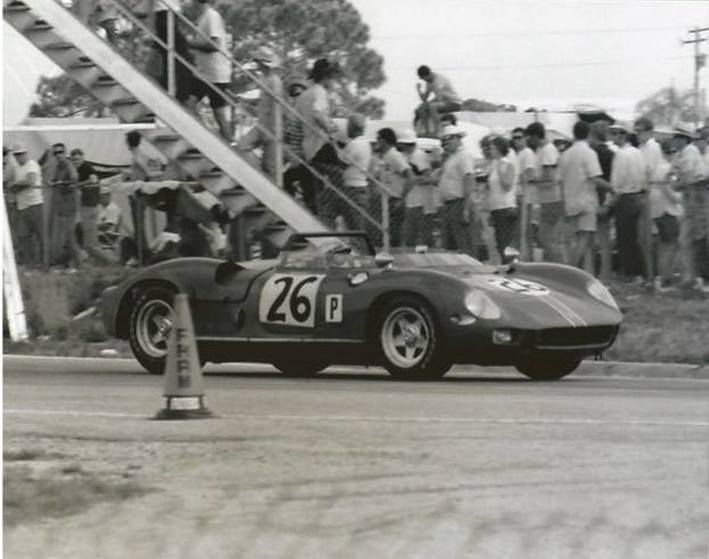 "This is Sebring 1969. This is 250 P # 0816. That was the car we had about a week to prepare for Sebring. Added "Lightweight" fiberglass rear deck and a three liter motor to comply with the new regs. Pedro and Chuck Parsons took it to a DNF in like the tenth hour. This after Pedro tried everything he could to break it so he could go home early." ~ Ted Johnson 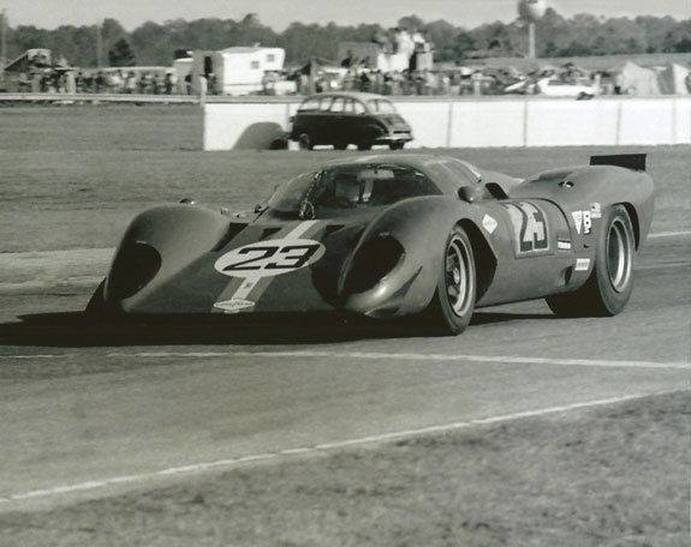 "Thanks Tom Frasca for the picture post of the NART 312P #23 I drove with David Piper at 70 Daytona 24 hr. It was my first Ferrari drive and what a great one to remember . We drove 5.5 hrs with NO water in the engine and finished 2 nd in class . The No. 24 was Michael Parkes and Sam Posey who won class. ~ CIAO Tony Adamowicz" 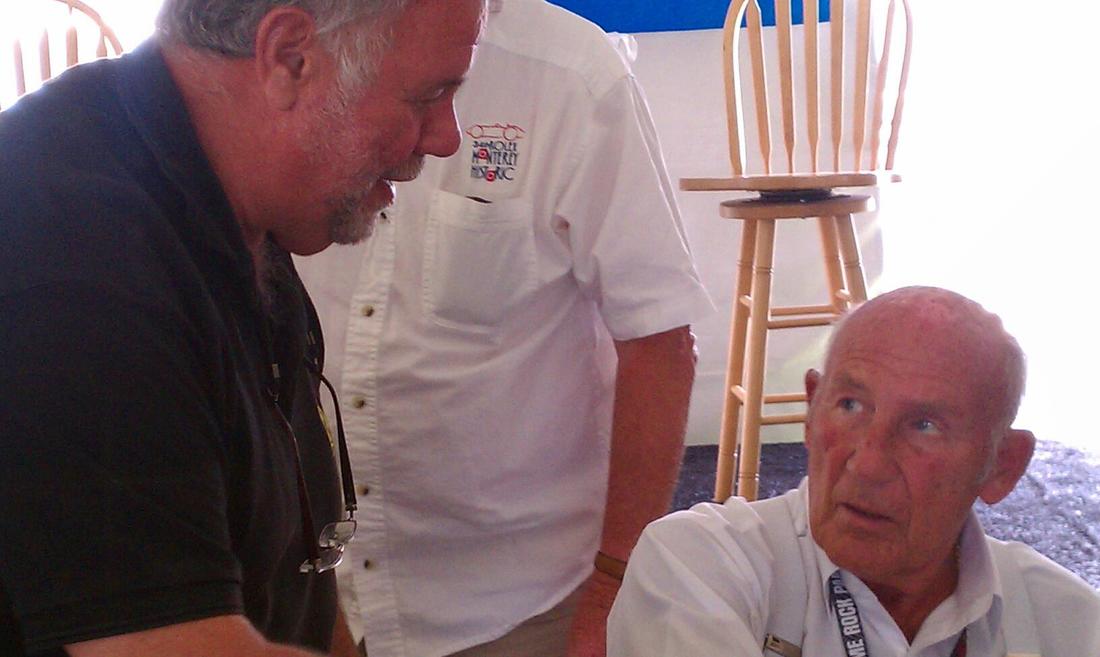 "Did you know Sir Sterling was a NART driver...the inaugural Daytona...1962: Phil Hill and Ricardo Rodriguez finish second overall in a Ferrari Dino 246SDP . Stirling Moss finishes fourth in NART Ferrari 250GT and wins S+5000 class. NASCAR star Fireball Roberts finishes 12th in a NART Ferrari 250GT." ~ Tom Frasca There is an undeniable historical link between the Philadelphia area and Marenello, Italy’s unparalleled world championship Formula 1 racing tradition. It begins with Luigi Chinetti Sr., the original United States dealer for Ferrari automobiles. The famous race car driver and American immigrant convinced his close friend Enzo Ferrari that tapping into American affluence was the ideal means to fund Ferrari’s most competitive racing effort. Timing was important. Italian teams dominated from the beginning of Formula 1 in 1950, winning eight titles in the first nine years. Yet, when a separate championship title was awarded to the constructors of the cars in 1958, only two titles were won by Italian racing teams – both by Ferrari – in the next seventeen years. But we're getting a bit ahead of the story... Derham Custom Body CompanyIn 1887 Joseph Derham opened Derham Custom Body Company and became known throughout the world as the coachbuilder of the finest motorcars ever produced. Founded by Joseph J. Derham, an Irish immigrant, the company catered to Philadelphia's Main Line, an string of towns in the city's suburbs where the affluent gathered in private clubs – on their sprawling estates – to escape the city's hustle and bustle. In the early days of the car, bodies and chassis were constructed separately. At the time it also wasn't unusual for a wealthy auto-owner to have an auto-body for both summer and winter months. Of the classic custom coach-builders, only Derham survived the Great Depression in the 1930s. For 85 years the company built custom coachbodies for cars, from some of the earliest cars ever made to some of the most sought-after vehicles by collectors. During the early part of the last century, Derham bodies graced Duesenburgs, Packards and Pierce-Arrows – all crafted by hand in Philadelphia and Rosemont. Cars that rolled out of their carriage works chauffeured kings and dictators, Popes, presidents and movie stars like Josef Stalin, Pope Pius XII, King Farouk, President Eisenhower, and Gary Cooper owned Derham-built automobiles. Algar Ferrari By the 1960’s, Derham Custom Body Company was deriving much of its revenue from retrofitting automobiles with fiberglass bulletproofing. Al Garthwaite had his eyes open for new opportunity. Al Garthwaite Jr. became the owner of Derham Custom Body Company in 1962 and renamed the company Algar, short for AL GARwaite. In 1972, Garthwaite partnered with Luigi Chinetti to create an automobile importing company fundamental in giving birth to the East Coast American Ferrari Dealer Network. Luigi Chinetti was one of the key figures in Ferrari's early success in America. In 1949, Chinetti drove a 166 M to Ferrari's first win in motorsports during the 24 Hours of Le Mans. Chinetti had been appointed as the official importer of Ferrari cars to the United States in the late 1940s. Chinetti's passion for the brand, and his belief in the potential of American drivers and teams, led him to establish the North American Racing Team (NART) in 1958. NART was the only American team to ever compete in the 24 Hours of Le Mans and it was also involved in other international motorsports events such as the 12 Hours of Sebring and the 24 Hours of Daytona. The partnership between NART and Ferrari was key in promoting Ferrari in the American market, through the team's numerous racing successes and its lasting impact on the sport. Chinetti and Garthwaite established retailers from the Atlantic coast to the Mississippi River and through the lower half of Texas, the Chinetti-Garthwaite enterprise imported over 1600 Ferraris to this network through a distribution facility in Paoli, Pennsylvania. The success of the Paoli-based distribution partnership contributed measurably to the restoration of Ferrari racing greatness. In a contest where dollars produce horsepower, Chinetti’s idea paid off with a Formula 1 title merely three years after the Chinetti-Garthwaite partnership was established. The Scuderia Ferrari team won the coveted Formula 1 World Championship three more times in the next four years. They won thirteen Formula 1 titles over the last thirty- three years and fifteen since the Constructors award was presented. The next closest competitor won nine. Chinetti-Garthwaite partnership disbanded in 1980 when Ferrari established a factory controlled entity for US distribution. Under the name Algar Enterprises, Inc., (from AL GARthwaite) Garthwaite continued as a dealer for Ferrari automobiles. In 1995, Garthwaite sold his business to Bob Segal, a young motorsport enthusiast who brought racing to Algar in the form of the Ferrari Challenge Series and sponsorship of Ferrari Club of America track events. It was a time when exotic car manufacturers and retailers were recoiling from the impact of a recession and the implementation of an ill-timed federal luxury tax. Maserati left the market in 1990 and Alpha Romeo in 1995, leaving Segal with a single brand in his show room. Yet, in the last half of the 1990’s, Ferrari was the automobile line to have. Pre-sold production runs and long waiting lists at the factory were common throughout the country. This trend continues today with waiting lists as long as two years for the current Ferrari product line up. Algar Ferrari of Philadelphia
2023 Update: FErrari of PhiladelphiaIn December 2021, RDS Automotive Group, a premier luxury and exotics dealership group owned by Robert DiStanislao acquired Algar Ferrari of Philadelphia and renamed it Ferrari of Philadelphia in keeping with the brand standards of Ferrari dealerships. Throughout the Americas and world-wide, no other building has a richer history in the advancement of automobiles designed and crafted for the discerning motorist. It’s where the world’s greatest cars, Ferrari should be sold. Both the Pittsburgh Vintage Grand Prix and everyone at the Cortile is very pleased to welcome the great folks from Ferrari of Philadelphia as a sponsor at the Pittsburgh Vintage Grand Prix's Cortile! Sources |
AtributionThis is a compilation of articles from a variety of sources and contributors. Attrition and sources are always provided at the top and/or the bottom of the posting. Archives
August 2023
Categories
All
|
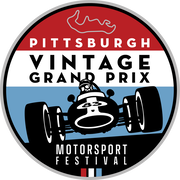
The Pittsburgh Vintage Grand Prix Association is a federally registered 501c (3) non-profit organization with a mission to hold a world-class vintage automotive race event for charity.
Since 1983 this volunteer-driven event has raised over $6 million to benefit autistic and developmentally disabled individuals through the Autism Society of Pittsburgh and Allegheny Valley School. The Pittsburgh Vintage Grand Prix remains North America's largest vintage race event, the only one run on city streets, and the 8th largest car show in the World. |

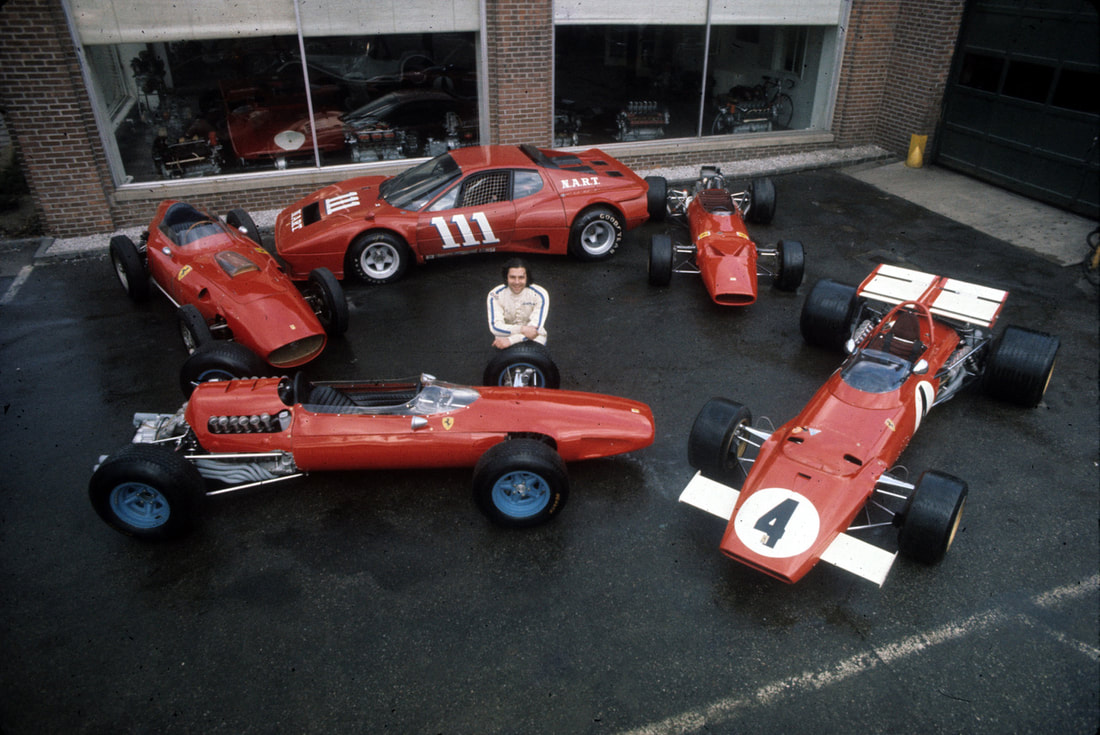
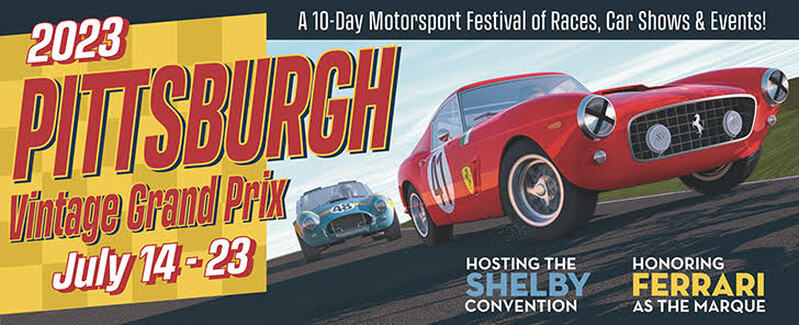
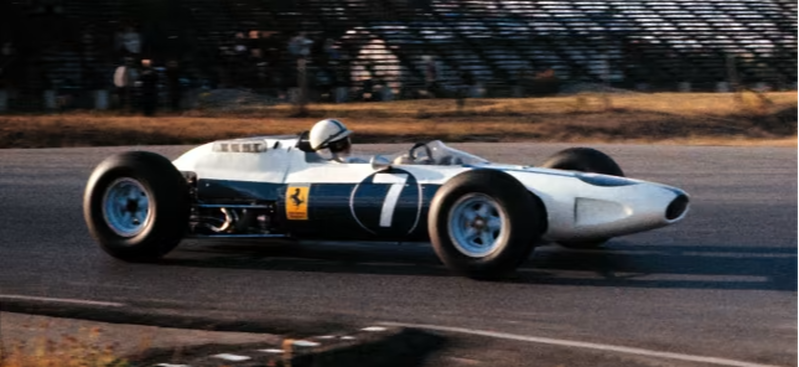
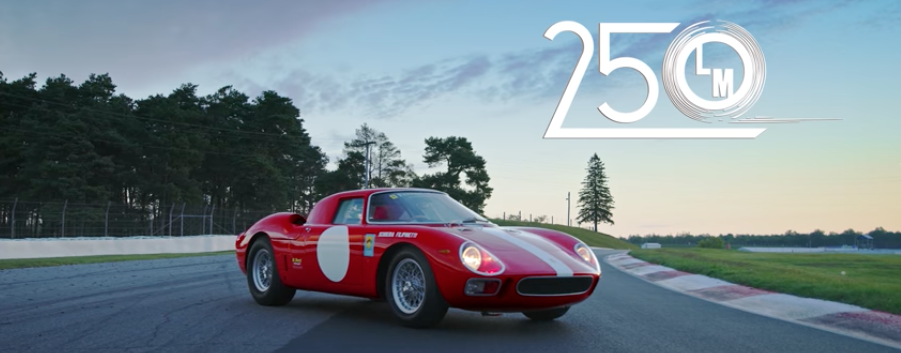
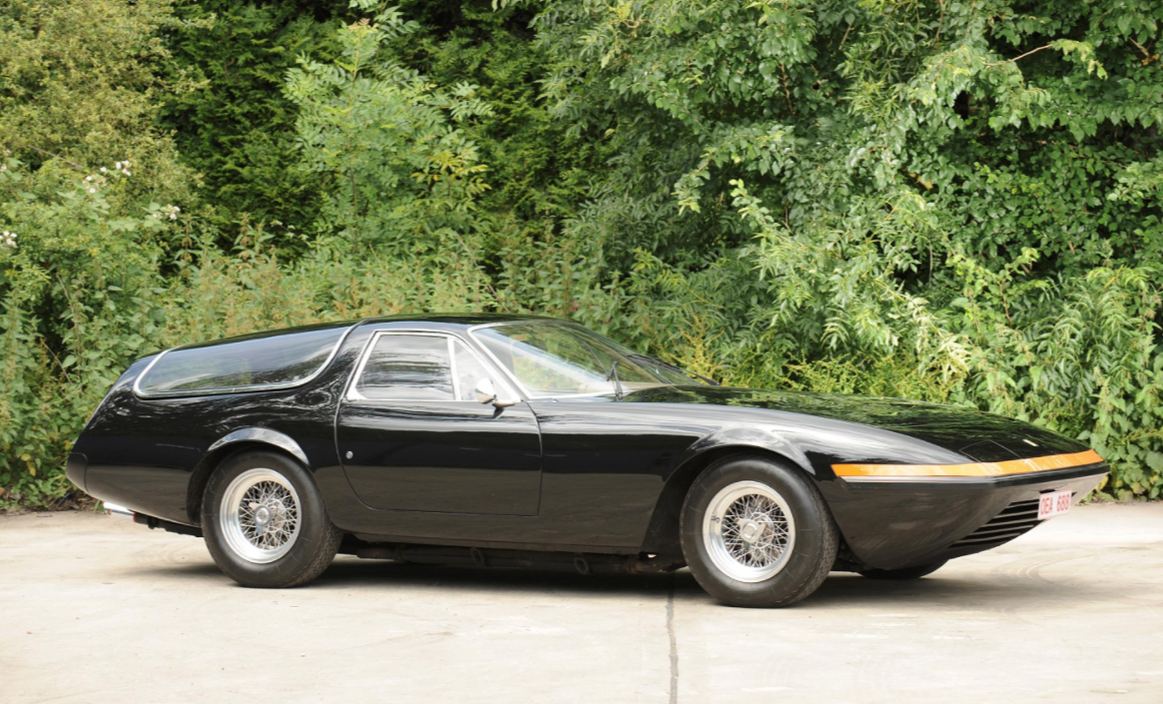
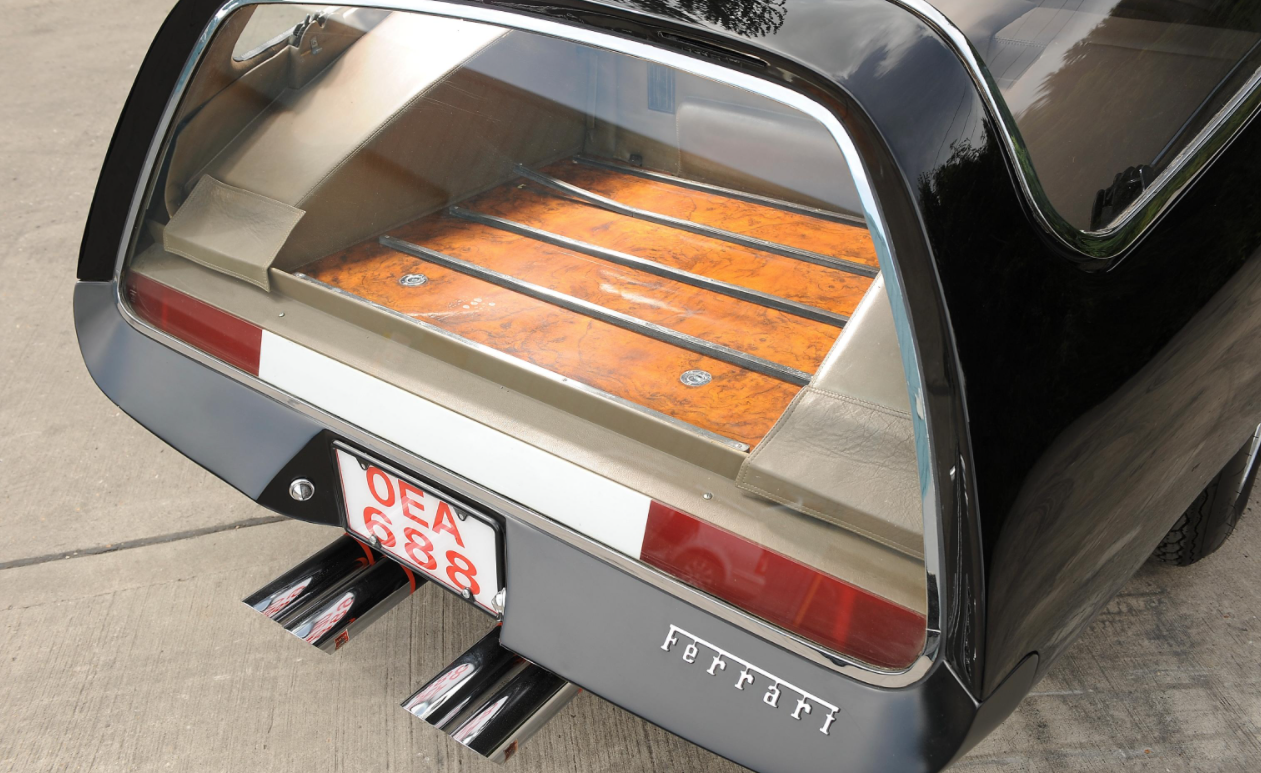
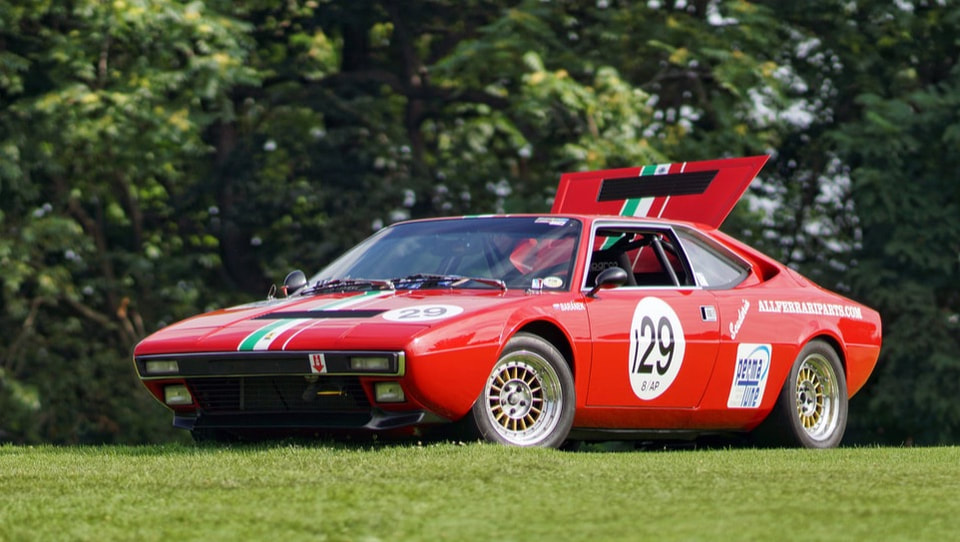
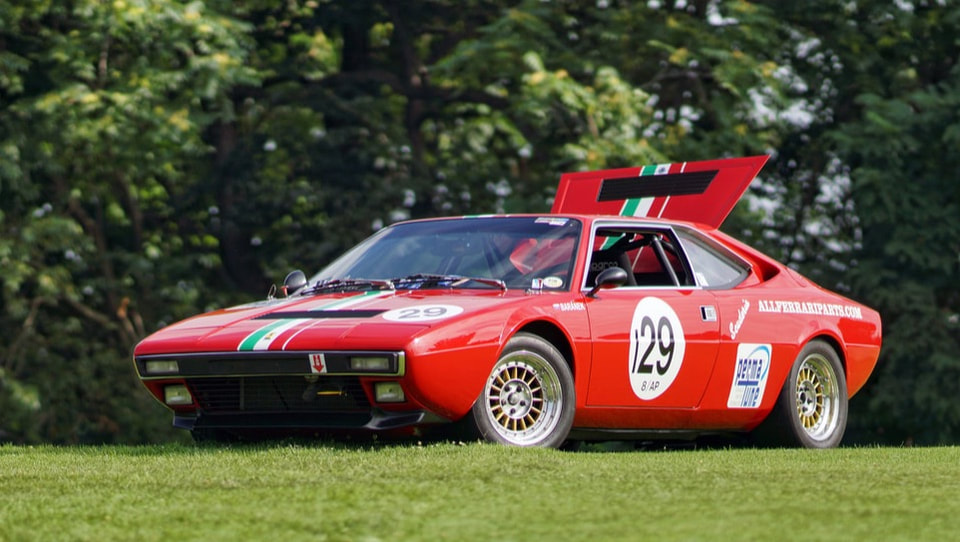
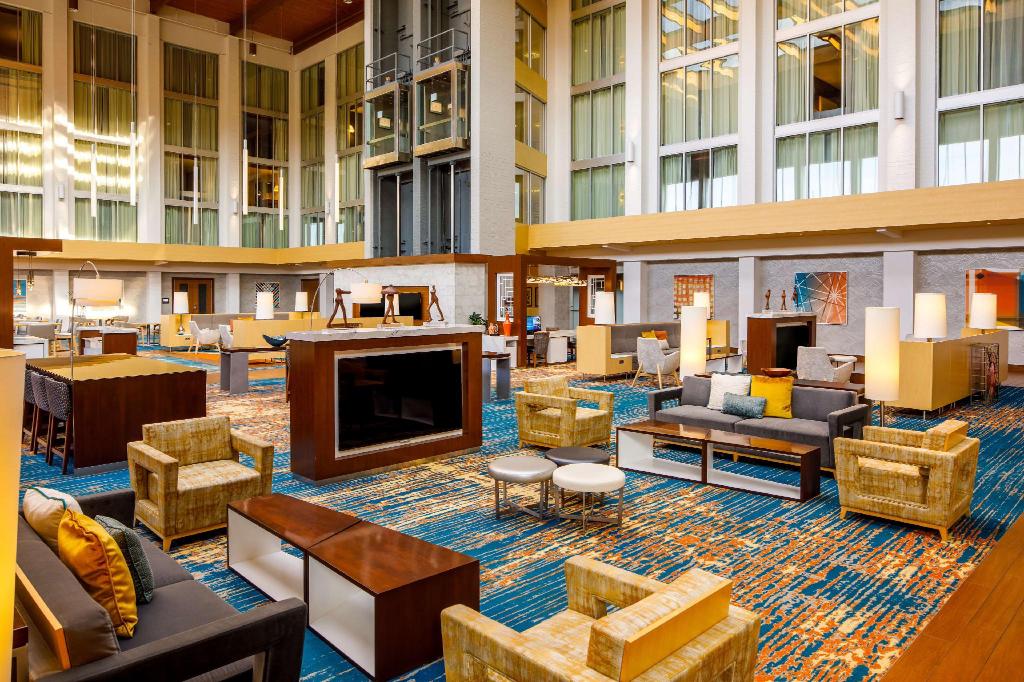
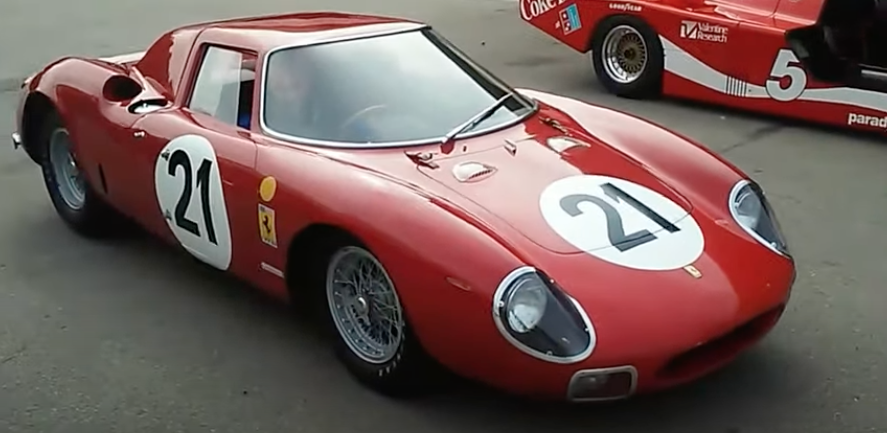
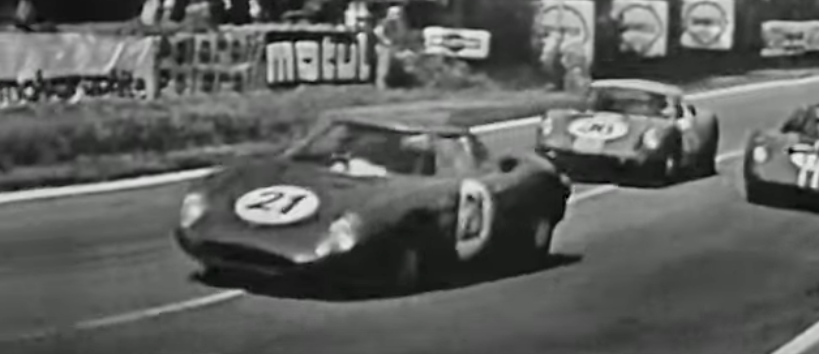
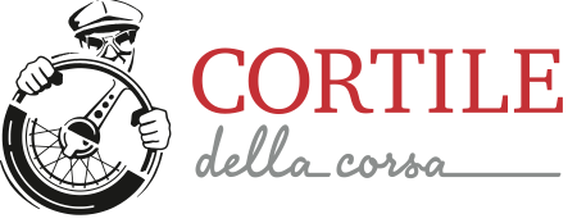
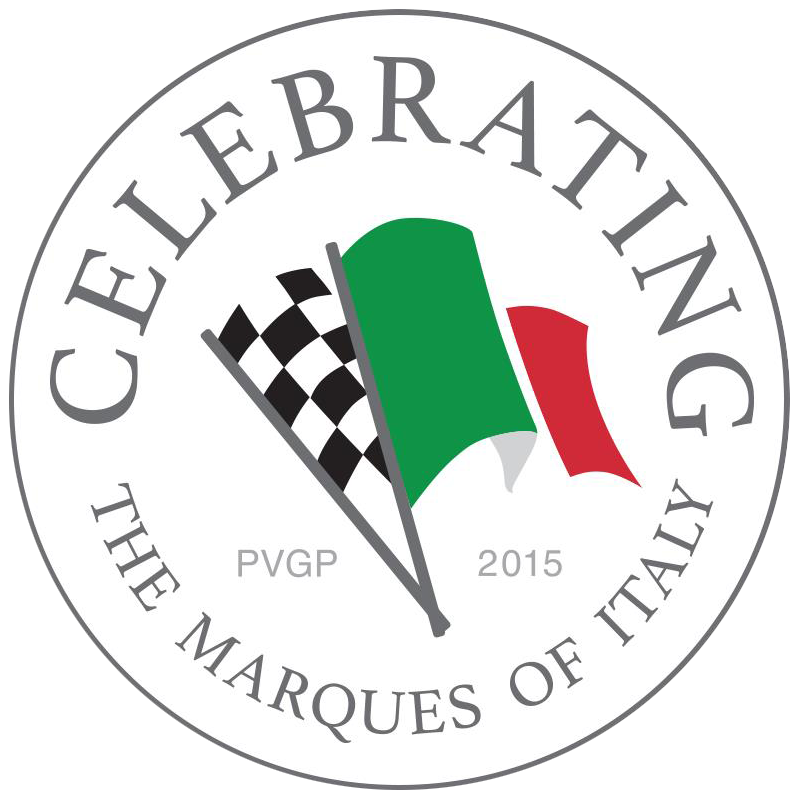
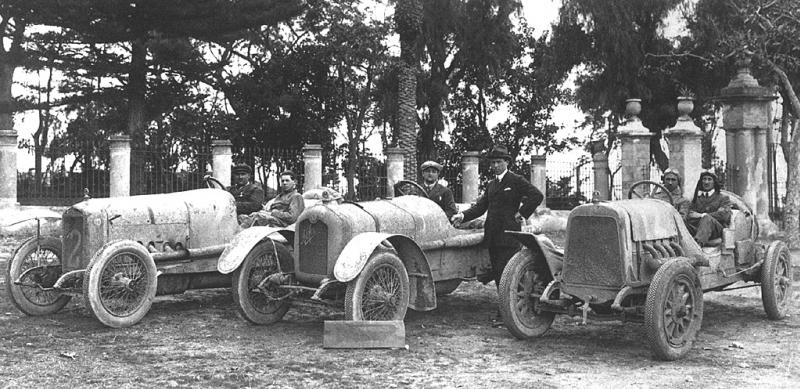
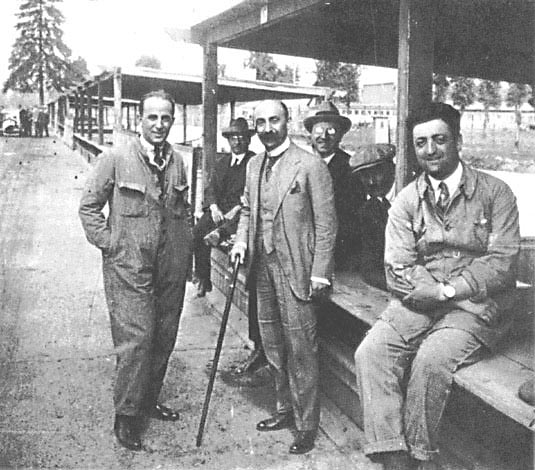
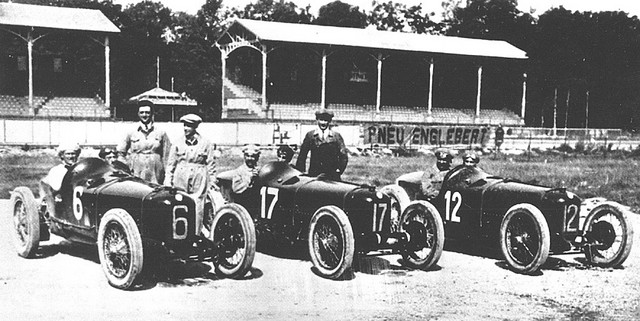
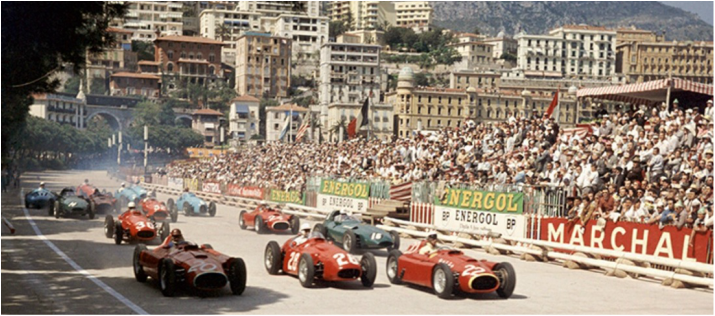
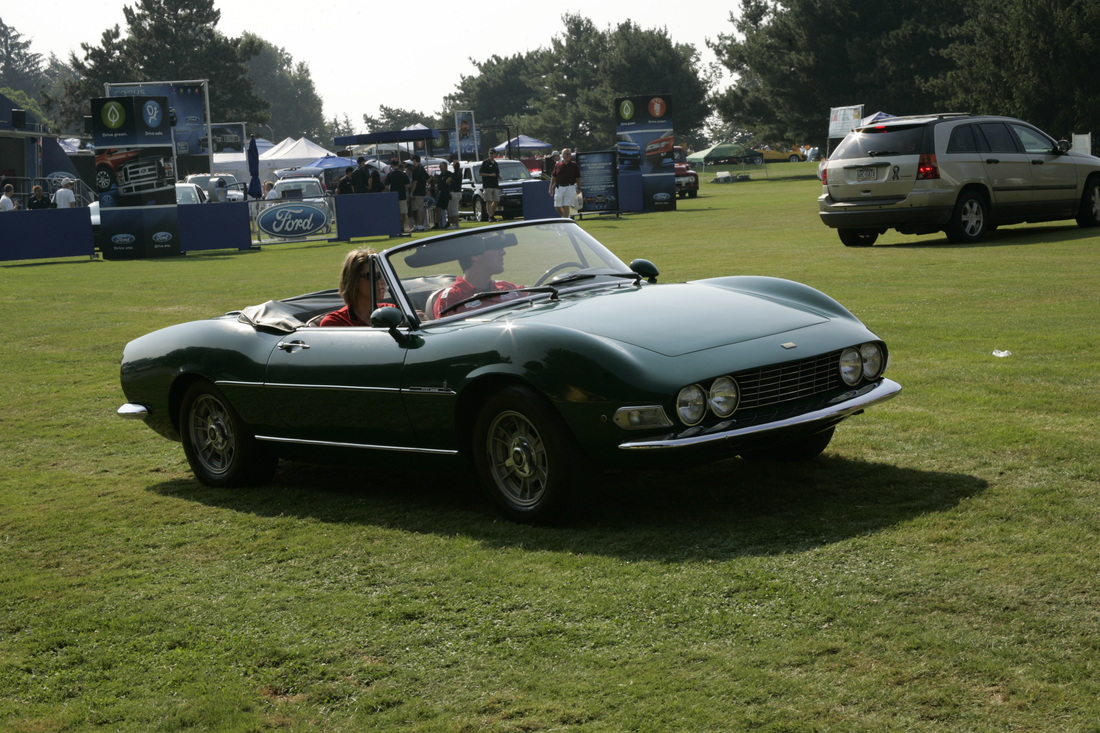
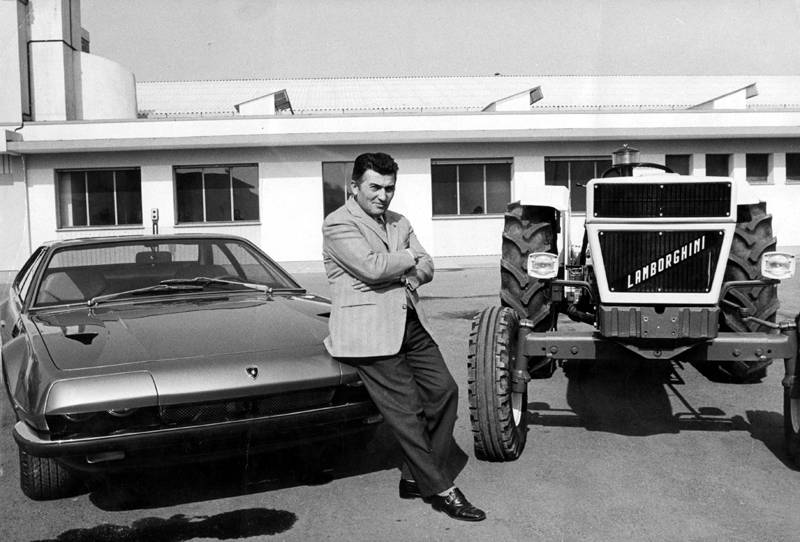
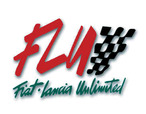
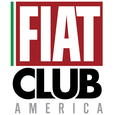
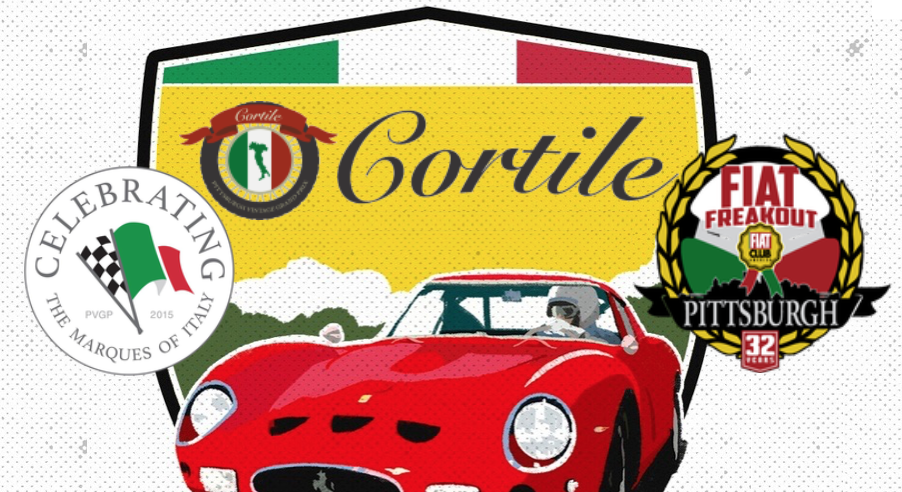
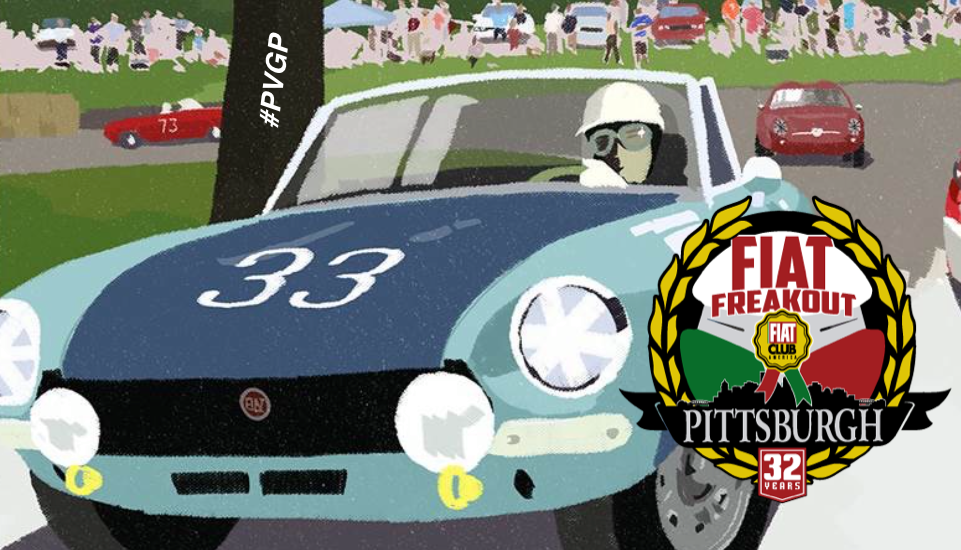
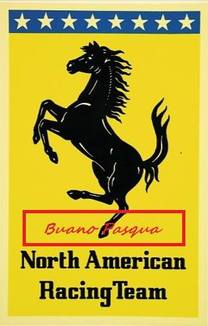
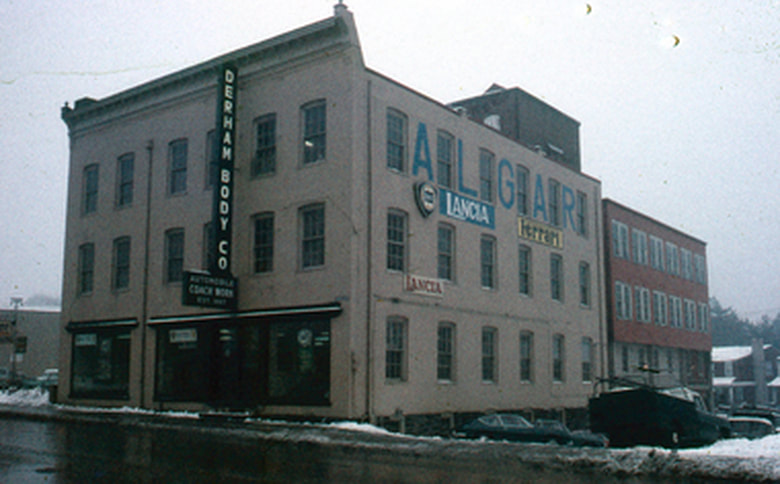
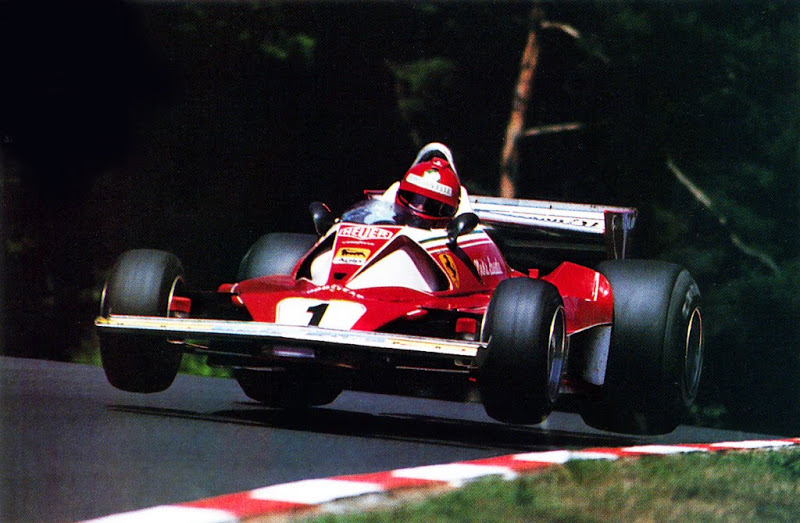
 RSS Feed
RSS Feed